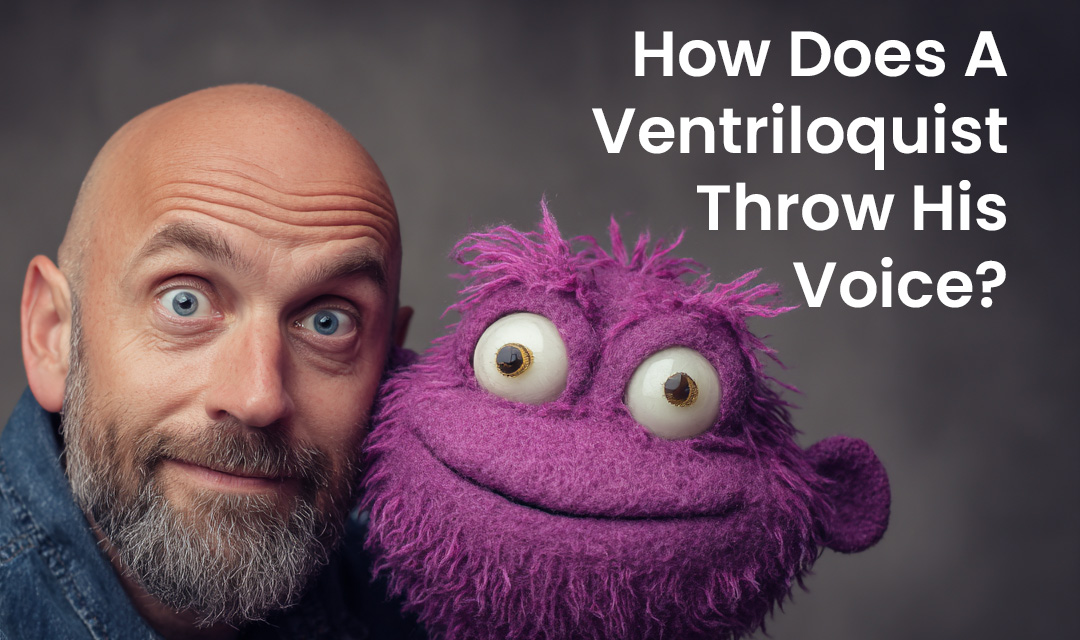Updated: August 2025
How Does Throwing Your Voice Work?
Most people believe ventriloquists can “throw” their voices like a magician tossing a sound across the room.
But let’s clear this up: you can’t literally project your voice to a different location. No one can. That’s not how sound works.
Still, when done correctly, the illusion is so strong that it feels like the voice is coming from somewhere else—like a puppet, a box, or the corner of the stage.
So, how does throwing your voice work?
Let’s break down the basics.
What Is “Throwing Your Voice”?
“Throwing your voice” is a performance illusion used in ventriloquism. It’s not about changing the physics of sound—it’s about misdirecting the listener’s perception.
Ventriloquists use control, misdirection, and visual cues to make the audience believe the voice is coming from a source other than their mouth.
The Illusion Comes Down to Three Main Tricks:
1. Lip Control
The fewer visible mouth movements, the more convincing the illusion. Ventriloquists train their lips and facial muscles to stay still while speaking, which takes time and discipline.
2. Vocal Shaping
The voice is softened, slightly altered in tone, or redirected into the cheek or nasal cavities. This subtle manipulation makes it harder to localize where the sound is really coming from.
3. Visual Misdirection
The performer looks toward the puppet. The puppet’s mouth moves in sync. All attention shifts away from the real source: the ventriloquist.
Audiences are wired to trust what they see. If the ventriloquist puppet is animated while the performer is still, the brain fills in the gap—and believes what it sees.
Why It Works So Well
From about 10 feet away, the human ear struggles to pinpoint sound direction accurately—especially in a setting with multiple distractions. If a puppet appears to talk while the ventriloquist seems silent, the illusion is complete.
And that’s the secret: not magic—just technique, timing, and training.
Common Myths About Throwing Your Voice
Myth: You can train your voice to “travel.”
Nope. Sound travels in waves from its source—your mouth. You can’t beam it elsewhere.
Myth: Anyone can learn it in a weekend.
Ventriloquism is a skill. Like juggling or playing piano, it takes guidance, repetition, and correction to master.
Myth: It’s just about talking without moving your lips.
That’s part of it, but not even close to the whole picture.
Want to Learn the Real Method?
If you’ve ever wanted to learn how to throw your voice the right way—not just parlor tricks or bad YouTube advice—the Learn Ventriloquism Course takes you step by step.
Inside, you’ll get:
-
Bite-sized lessons focused on control, tone, and performance
-
Video demos of real lip exercises and breathing techniques
-
On-camera practice drills for believable puppet illusion
Mini Practice Teaser
Want a taste? Here’s a beginner-friendly 3-step drill you can try right now:
-
Say the alphabet with your lips gently touching.
This forces you to begin thinking about airflow and substitute shapes for letters. -
Look in the mirror while doing it.
Notice the letters or sounds that cause lip movement. -
Say a simple word like “hello” without moving your lips.
Now try to rework the word into sounds that don’t require visible movement. (We cover how in full inside the course.)
FAQ: How Does Throwing Your Voice Work?
Can anyone learn to throw their voice?
Yes. It’s a trainable performance skill—not a talent you’re born with.
Does it sound like a different person?
Sometimes—but the real trick is where the audience thinks the voice is coming from, not just what it sounds like.
Is it hard to learn?
Like any skill, it takes repetition and real guidance. But with a proper system, it’s easier than you think.
Final Word
“Throwing your voice” is a powerful illusion rooted in skill—not superstition.
You can learn it. You just need the right path.
Join the course and start learning ventriloquism the right way—today.
Next Article: Ventriloquism – How To Do It – Saying ‘P’
Previous Article: Ventriloquist Scripts








